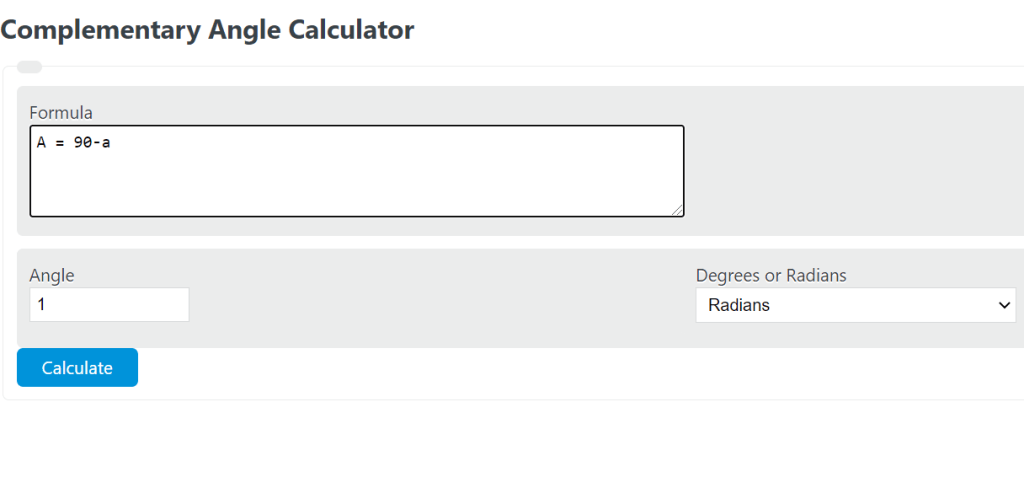Enter any angle in degrees or radians into the calculator to determine the complementary angle.
Complementary Angle Formula
The following formula is used to calculate a complementary angle.
A = 90-a
- Where A is the complementary angle (degrees)
- a is the original angle (degrees)
To calculate the complementary angle, subtract the original angle from 90 degrees.
Complementary Angle Definition
A set of complementary angles is defined as any two angles that, when added together, will equal 90 degrees.
How to calculate a complementary angle?
- First, determine the initial angle. If measure in radians, multiply by 57.29 to get the angle in degrees.
- Next, use the formula above to calculate the complementary angle.
- For example, if the initial angle given was 25 degrees, then the complementary angle would be: 90-25 = 65 degrees.
FAQ
A set of complimentary angles have a sum of 90 degrees.
Yes, complementary angles can be negative. For example, if one angle is 120 degrees then the complementary angle is -30 degrees since 120 + (-30) = 90.
The only complementary angles that will be equal to each other are 45 degrees and 45 degrees. (45+45=90).
Complementary angles can share a common side when they lie in the first quadrant. For example, an angle of 70 and 20 would share a common side.
Complementary angles are only congruent when they equal each other.
Complementary angles will always make a right triangle when added together. By definition, their sum will be 90 degrees.

